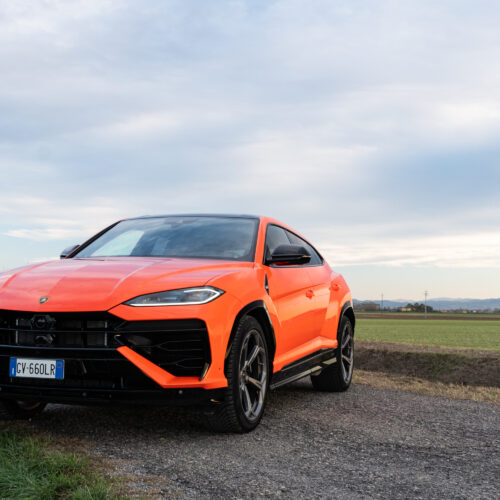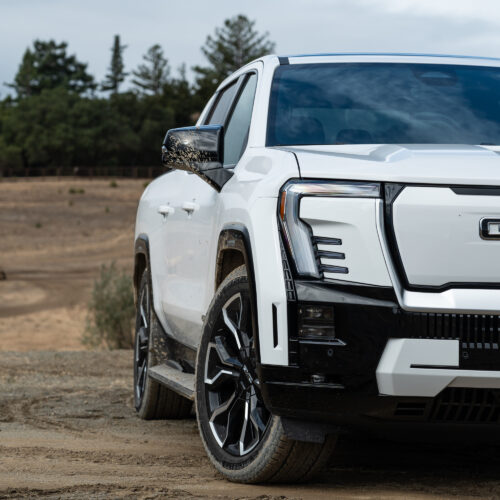CES 2025: BMW's vision-spanning Panoramic iDrive will make sure you never miss another navigation prompt
At a surprisingly star-studded event this morning, BMW showed off the final form of its long-awaited and long-teased Panoramic iDrive system. It's a combination of an oddly angular touchscreen, a windshield-spanning heads-up display, and an LLM-powered AI assistant. The big news? It's coming to every future BMW.
Comedians Tim Meadows and Ken Jeong welcomed the assembled crowd into a studio designed to look like an oversized interior of the company's upcoming Neue Klasse. They did their best to goad BMW's Bavarian executives into a series of jokes and bits that mostly fell as flat as the central touchscreen that now dominates the iDrive experience.
Thankfully, it's not comedy that brought us to Las Vegas this week, and the good news for BMW is that the interface looks good. The software behind the scenes is called BMW Operating System X, and it powers a new iDrive that combines screens and voice commands to create a familiar but far more comprehensive interface than anything we've seen in a BMW before.
It all starts with that central touchscreen, but even that is different. Rather than being square or curved like in other BMWs, the new panel is rhomboid-shaped, a slanted polygon whose leaning posture doesn't seem to really augment the experience but does at least look distinctive.
The panel is also tilted slightly towards the driver and is running software that is at least familiar to anyone who's used the current iDrive interface. A static bar along the bottom provides quick access to the most important things, like controls for the heating system. Above that, a stylized, 3D view of the world makes sure you're always situated.
Things get more interesting when you move up the dashboard. Running along the base of the windshield is what BMW calls Panoramic Vision. It spans the width of the car, with the left-most portion handling typical gauge cluster duties like displaying current speed, active safety controls, and even warnings.

The rest of the Panoramic Vision display is customizable, with six widgets that you can drag up from the central touchscreen covering things like outside temperature, navigation ETA, and even another widget showing you turn-by-turn information. It's much that we've seen in demos from BMW before, but now nearly ready for prime-time with the cars shipping at the end of this year.
Given the Panoramic Vision's importance in the overall in-car experience, I asked the guy who oversaw the development of all this, BMW's SVP of connected company technical operations Stephan Durach, whether there were any visibility issues in the bright sunlight.
"This technology is a little bit different than a traditional heads-up display... we're using black print on the bottom. In bright sunlight, it's even performing a little bit better," he said. "You'll not have any issues at all."
If that's not enough displays for you, there's another HUD situated on the left, up above the Panoramic Vision, which gives 3D navigation information for the driver. Yes, between the touchscreen, the Panoramic Vision display, and the HUD, you can get three separate feeds of turn-by-turn directions.
In other words, if you miss a turn in this thing, you have nobody to blame but yourself.

BMW also quickly demonstrated a new in-car LLM that, for now at least, is only for navigation. It was all pre-recorded, so it's anyone's guess how well this will work in reality, but in the demo, at least, it quickly found "the best beach" and navigated there. When our pretend driver left the city, the car even asked whether to automatically engage Sport Mode, which was a nice touch.
BMW's Durach confirmed that Android Auto and Apple CarPlay will still be supported. He also teased that there are some more fun tricks to come that will get passengers more involved in the experience.
BMW ended the presentation by confirming that Panoramic iDrive will not only be coming to the Neue Klasse when it finally hits the market at the end of this year but will be the standard interface for all new BMWs that launch after that. That means the days of the rotary iDrive controller are now officially numbered.
I asked Durach if he had any parting words for this once-revolutionary vehicular interface.
"We take a look at all of our data and usage... you can really see that the usage of our rotary controller is declining dramatically," he said. "People don't even touch it."
It's a harsh send-off, but these days you just can't cry over progress.
This article originally appeared on Engadget at https://www.engadget.com/transportation/ces-2025-bmws-vision-spanning-panoramic-idrive-will-make-sure-you-never-miss-another-navigation-prompt-192022046.html?src=rss
©

© Tim Stevens for Engadget




